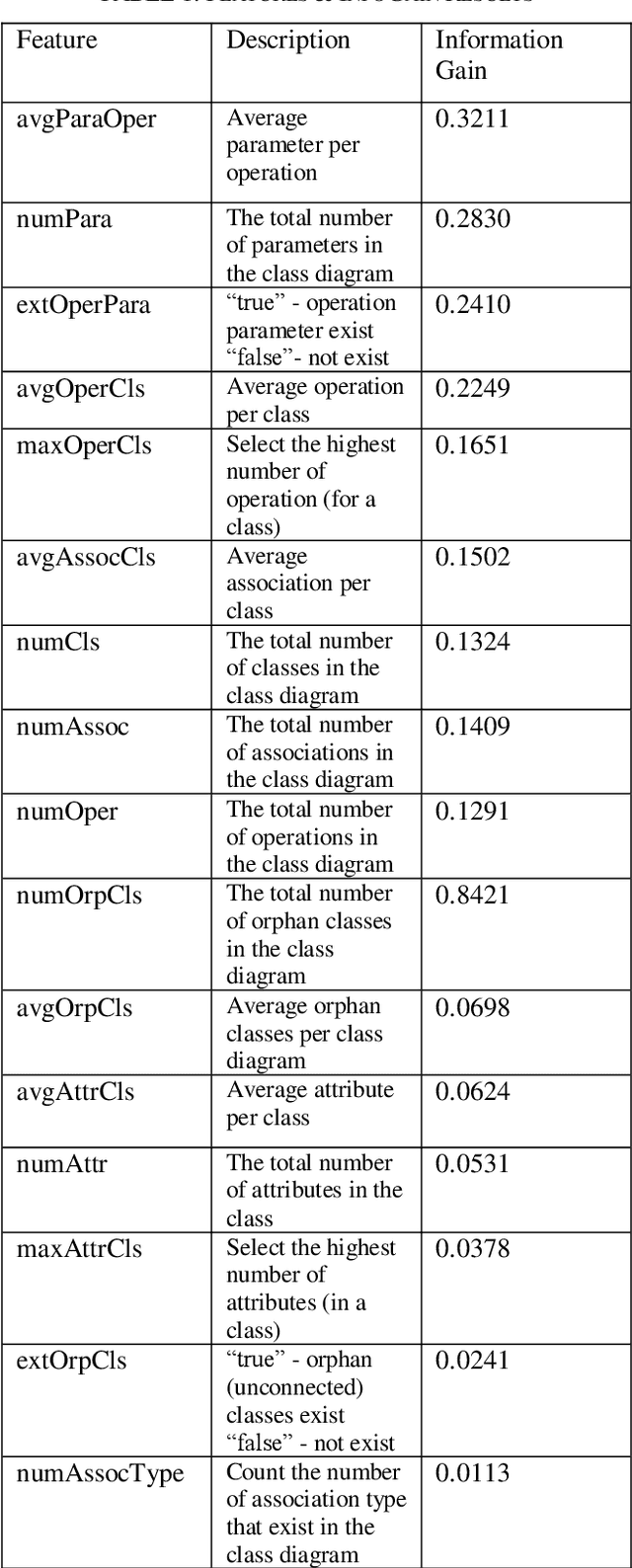Kaushil Mangaroliya
Classification of Reverse-Engineered Class Diagram and Forward-Engineered Class Diagram using Machine Learning
Nov 14, 2020

Abstract:UML Class diagram is very important to visualize the whole software we are working on and helps understand the whole system in the easiest way possible by showing the system classes, its attributes, methods, and relations with other objects. In the real world, there are two types of Class diagram engineers work with namely 1) Forward Engineered Class Diagram (FwCD) which are hand-made as part of the forward-looking development process, and 2). Reverse Engineered Class Diagram (RECD) which are those diagrams that are reverse engineered from the source code. In the software industry while working with new open software projects it is important to know which type of class diagram it is. Which UML diagram was used in a particular project is an important factor to be known? To solve this problem, we propose to build a classifier that can classify a UML diagram into FwCD or RECD. We propose to solve this problem by using a supervised Machine Learning technique. The approach in this involves analyzing the features that are useful in classifying class diagrams. Different Machine Learning models are used in this process and the Random Forest algorithm has proved to be the best out of all. Performance testing was done on 999 Class diagrams.
Dermatologist vs Neural Network
Jun 15, 2020



Abstract:Cancer, in general, is very deadly. Timely treatment of any cancer is the key to saving a life. Skin cancer is no exception. There have been thousands of Skin Cancer cases registered per year all over the world. There have been 123,000 deadly melanoma cases detected in a single year. This huge number is proven to be a cause of a high amount of UV rays present in the sunlight due to the degradation of the Ozone layer. If not detected at an early stage, skin cancer can lead to the death of the patient. Unavailability of proper resources such as expert dermatologists, state of the art testing facilities, and quick biopsy results have led researchers to develop a technology that can solve the above problem. Deep Learning is one such method that has offered extraordinary results. The Convolutional Neural Network proposed in this study out performs every pretrained models. We trained our model on the HAM10000 dataset which offers 10015 images belonging to 7 classes of skin disease. The model we proposed gave an accuracy of 89%. This model can predict deadly melanoma skin cancer with a great accuracy. Hopefully, this study can help save people's life where there is the unavailability of proper dermatological resources by bridging the gap using our proposed study.
 Add to Chrome
Add to Chrome Add to Firefox
Add to Firefox Add to Edge
Add to Edge